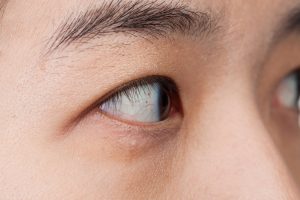One of the most common bacterial infections is sinusitis. If you have sinusitis, your nasal passages can become blocked and infected. There are different causes of sinusitis, including viruses, bacteria, and fungi. Antibiotics that are commonly used to treat sinus infections include dicloxacillin (Monurol), cefdinir (Omnicef), and amoxicillin/clavulanate (Mepron). Read this article to know more about using cefdinir for sinus infection.
This article will focus on the uses, side effects, dosage, and interactions of dicloxacillin and cefdinir as effective antibiotics against acute sinusitis caused by different types of bacteria.
This article will focus on the uses, side effects, dosage, and interactions of dicloxacillin and cefdinir as effective antibiotics against sinusitis caused by different types of bacteria.
The antibiotic dicloxacillin is a semi-synthetic penicillin antibiotic with moderate activity against beta-lactamase-positive, gram-positive, and gram-negative bacteria.
Dicloxacillin may also interact with other medications for high blood pressure or heart problems, such as warfarin (Coumadin) or clopidogrel (Plavix).
What is cefdinir?
Cefdinir is a semi-synthetic broad-spectrum cephalosporin antibiotic with a high affinity for penicillin-binding sites in the cell wall.
It may interact with medications for blood pressure control or a heart condition, such as warfarin (Coumadin) or clopidogrel (Plavix).
What is cefdinir used for?
Cefdinir is used to treat bacterial infections, including acute maxillary sinusitis. It also treats other bacterial infections, such as skin and lung infections.
Cefdinir can be used with or without food and taken with or without water.
Will cefdinir treat sinusitis?
Cefdinir is an antibiotic that belongs to the cephalosporin class of broad-spectrum antibiotics. Cefdinir has a high affinity for penicillin-binding sites in the cell wall and has significant activity against bacteria resistant to other antibiotics.
Therefore, cefdinir may be prescribed as a treatment for sinusitis caused by different types of bacteria, including Streptococcus pneumonia, Staphylococcus aureus, Haemophilus influenzae, and Listeria monocytogenes.
Is cefdinir effective for other infections?
In addition to treating sinusitis, cefdinir may also be administered for genital infections and otitis media in pediatric patients. However, cefdinir is ineffective against Salmonella or Neisseria gonorrhoeae and does not work against Mycobacterium tuberculosis or Mycobacterium chelonae.
How cefdinir works for sinusitis
The antibiotic cefdinir works against bacteria by interfering with bacterial cell wall synthesis. Cefdinir works by binding to penicillin-binding proteins (PBPs), which interfere with the transpeptidation reactions in the cells necessary for cell wall synthesis.
Cefdinir also induces a conformational change in PBPs, causing them to no longer bind to their targets, which prevents cell walls from being assembled and inhibits bacterial growth.
How fast does cefdinir work for sinusitis?
Cefdinir is typically prescribed for sinusitis. It starts working as soon as it enters the bloodstream and should be complete in about two hours.
However, this antibiotic can take up to eight hours to leave the body.
Cefdinir for sinus infection dosage
Cefdinir dosage may vary depending on the type of sinusitis you have.
The following is the suggested cefdinir dosage for sinusitis:
Cefdinir dosing information: -Tablets, capsules, and liquid formulations (oral suspension) range from 250 mg to 1 g per day.
-Tuberculosis infections are treated with 1.2 to 3.4 g/day in two divided doses for 10 days or more
-For bacterial meningitis, use 250 mg 3 times daily for 7 days or 2.5 to 5 g/day in divided doses for 14 days.
Dicloxacillin dosing information: -250 mg orally 3 times daily for 7 days
Cefdinir is available in brand names like Omnicef and Adcef.
How much cefdinir should I take for sinusitis?
The dosage for dicloxacillin ranges from 250-500 mg, and the dosage for cefdinir ranges from 400-800 mg. You should take the dose once daily.
Advantages of cefdinir for sinus infection
Cefdinir has several advantages for treating acute bacterial sinusitis. The most significant advantage is that cefdinir does not have a known interaction with warfarin (Coumadin) or clopidogrel (Plavix). These two medications control the risk of heart attacks and strokes, respectively.
In addition, it has a broad-spectrum antibiotic activity against many different types of bacteria.
As a result, cefdinir is more effective than other antibiotics commonly used to treat sinusitis.
Patients who were given cefdinir in clinical trials had fewer side effects, including headaches, vomiting, and diarrhea.
It also appears easier on the stomach than other antibiotics like amoxicillin/clavulanate (Mepron).
Disadvantages of cefdinir
Conversely, cefdinir may interact with other drugs when taken concomitantly with them. For example, patients taking warfarin (Coumadin) or clopidogrel (Plavix) should take their doses at least four hours apart from each other so that the drug interactions don’t create serious health problems.
Additionally, cefdinir can cause dizziness or lightheadedness in some patients and increase blood sugar levels in diabetic patients.

What are the side effects of cefdinir for sinus infection?
Cefdinir has been shown to cause the following side effects:
-Nausea and vomiting
-Headache
-Reduced appetite
Allergic reaction
-Skin rash or itching
-Rash that causes a fever with no other symptoms
-Back pain
-Anemia
What are the risks and warnings for cefdinir?
Cefdinir is a semi-synthetic broad-spectrum cephalosporin antibiotic that may interact with medications for blood pressure control or a heart condition, such as warfarin (Coumadin) or clopidogrel (Plavix).
Cefdinir has been associated with a higher incidence of adverse reactions such as nausea, vomiting, dizziness, and headache.
Other side effects include abdominal pain, diarrhea, and rashes. The most common side effect seen in clinical trials was rash.
Side effects can be severe enough to warrant discontinuation of treatment.
Therefore, you should consult your doctor for health solutions if you notice any.
What foods should I avoid while taking cefdinir?
The most common food that could prevent the absorption of cefdinir is dairy products. This includes milk, yogurt, cheese, and ice cream.
Other foods to avoid while taking cefdinir include alcohol, caffeine, fish with high levels of mercury, some other types of seafood (such as tuna), and foods with high levels of fat (such as fried or fatty fish).
In addition, Cefdinir should not be taken by people who have a known allergy or intolerance to it.
Cefdinir may also cause side effects such as headache, abdominal pain, rash, vomiting, diarrhea, aching joints and muscles, dizziness, and lightheadedness.
How long does cefdinir take to clear sinusitis?
It can take up to 7 days to ease sinusitis caused by bacteria. Cefdinir may also be an alternative to other antibiotics like moxifloxacin (Avelox) and levofloxacin (Levaquin).
Frequently Asked Questions (FAQs)
Amoxicillin and cefdinir are the most common antibiotics used to treat sinusitis. They both work by weakening the bacteria.
Although they work in different ways, they both do the same thing.
Both amoxicillin and cefdinir may cause diarrhea, headache, dizziness, and vomiting.
Cefdinir works by blocking some of the bacteria’s proteins that help it to survive in your body.
This makes it less effective against certain types of bacteria than amoxicillin.
Amoxicillin may also work by blocking some of the gamma-globulin proteins in your blood that aid in making antibodies.
Both antibiotics may also lead to protein cross-linking within small blood cells called polymorphonuclear cells (PMNs).
This protein cross-linking can lead to a loss of function for some of these cells’ protein receptors and cell membranes.
Together, these factors make it harder for your immune system to destroy bacteria in your sinuses.
Cefdinir and amoxicillin are antibiotics of the same class. They work by interfering with the growth of bacteria, thus preventing them from replicating.
This results in a decrease in pus formation and an increased eradication rate of bacterial infection. They are two of the most frequently prescribed antibiotics for sinusitis treatment.
Although cefdinir has a longer duration of action than amoxicillin, it is more expensive and less often used.
Compared to amoxicillin, cefdinir has some advantages, such as a longer duration of action and fewer side effects, such as nausea and vomiting.
Some studies have also shown that cefdinir may be more effective against sinusitis caused by certain strains of bacteria. Both medications are acceptable choices for treating sinusitis, so it is a case of personal preference as to which one is preferable.
Cefdinir makes you sleepy because it is a selective inhibitor of the enzyme in neurotransmitters, cAMP.
Avoid this medication if you are pregnant or plan on becoming pregnant, as it may cause congenital abnormalities.
The Food and Drug Administration categorizes cefdinir as low risk for pregnancy (Class A). Cefdinir is excreted in breast milk.
If you are nursing a baby and taking this medication, speak to your healthcare provider before breastfeeding.
Sinusitis is an infection of the sinuses in the face or nose. These are air-filled cavities near and surrounding the eyes, behind the nose, and along the top of the head.
The sinuses are lined with a type of tissue (called mucosa) covered by a thin layer called skin.
There are many causes of sinusitis, but they all have something in common. All sinusitis causes pain and pressure in the face, pain when breathing deeply, and an unpleasant taste or smell from the mouth or nose.
Sometimes there may also be redness, drainage (runny nose), or problems with seeing.
In addition, a virus, bacteria, or fungus can cause sinusitis.
• Nasal polyps – small growths inside your nasal passages that grow from your nasal passages into your nose and can block them. Your doctor will probably remove them via surgery.
• Facial nerve paralysis – a partial or complete loss of feeling on one side of your face due to damage to facial nerve fibers leading to it. This nerve damage can result in numbness, tingling, and drooping skin and eyelids on one side of your face.
• Adenoid polyps – growths on either side behind your nose that look like tiny white bumps covered with hair. They can become infected and inflamed and cause pain and pressure behind your nose.
The best time to take cefdinir is when you take your first dose. After that, you should take the medication at the same time every day.
If you miss a dose of cefdinir, take it as soon as possible. If it is almost time for your next dose, wait until then to take the missed dose.
Precautions to follow
Avoid taking two doses at the same time. You may need extra medication to make up for the missed dose.
Keep your dosing schedule the same.
Take only cefdinir directed by your doctor or pharmacist.
If your symptoms improve or fade away before your next dose is due, check with your doctor or pharmacist to see if you should delay taking another dose.
If you do not follow the instructions given by your doctor or pharmacist, cefdinir may not work as well, and your condition may worsen.
Can I get cefdinir online?
Yes, you can get cefdinir (Omnicef) online, but you’ll require a doctor’s prescription.
Your doctor will examine your symptoms and perform a test to better understand your condition before recommending this medication.
How to get cefdinir online
You can get cefdinir (Omnicef) by booking a consultation with DrAlexa. DrAlexa is a telemedicine service offering world-class healthcare services at your convenience.
With DrAlexa, you can consult with our extensively trained and friendly doctors online and get a prescription for your condition.





